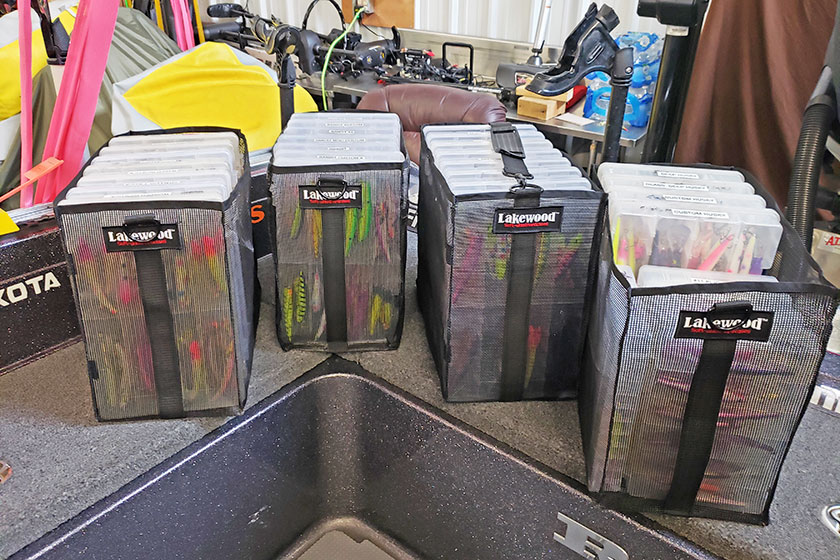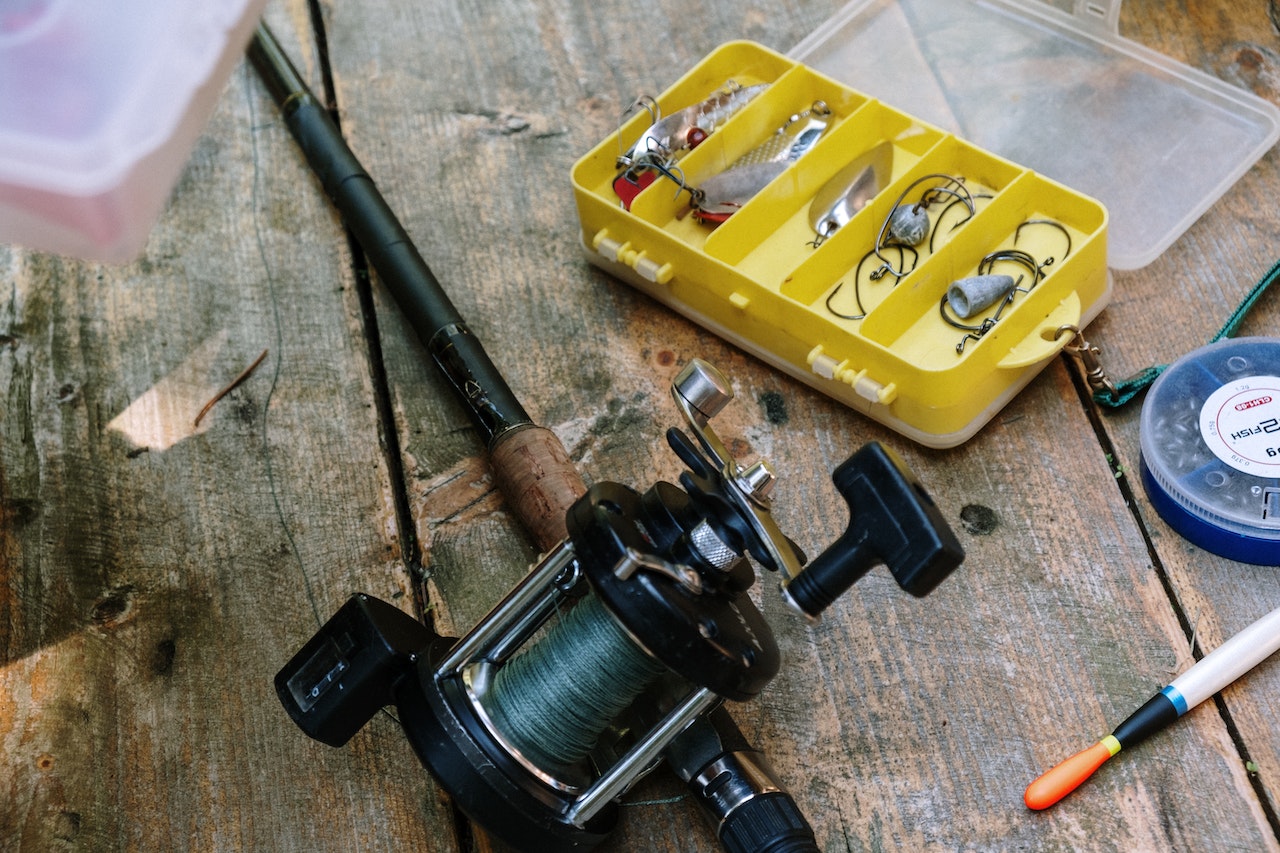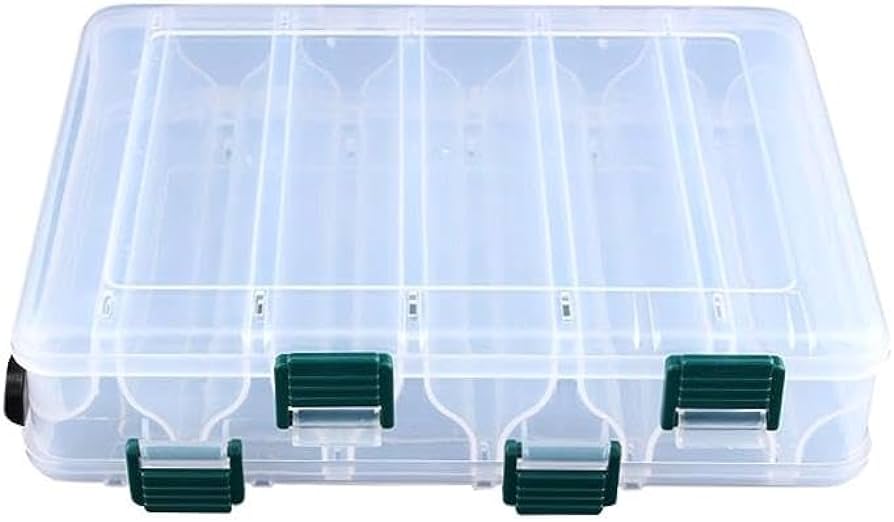Organize your fishing tackle box by categorizing gear based on type and frequency of use. Use dividers and small containers to separate items and prevent tangling.
Anglers understand the importance of a well-organized tackle box—it’s crucial for a successful and stress-free fishing trip. A neatly arranged tackle box saves time, prevents loss of gear, and makes it easier to locate the right lure or tool when you’re in the heat of fishing action.
Mastering the art of tackle organization means separating your hooks, lures, and other essentials into distinct compartments and maintaining an inventory that’s easy to navigate. Tailoring the layout to fit your personal fishing style not only enhances efficiency on the water but also protects your gear from damage. By keeping your fishing tackle in order, you’re always ready for whatever the water throws your way, ensuring that no fish slip away due to a chaotic search for the right bait or tool.
Tackle Box Essentials
Fishing is an art and your tackle box is your palette. An organized tackle box helps you find exactly what you need. We’ll walk through the essentials to keep your box well-organized.
Choosing The Right Box
Finding the best tackle box depends on your fishing style. Consider the size, material, and compartments. Hard boxes are durable. Soft tackle bags offer flexibility.
- Durability: Pick a box that withstands your fishing environments.
- Size: Make sure it’s big enough for essentials but small enough for easy transport.
- Compartments: Adjustable dividers help keep things tidy.
Basic Tools And Accessories
Your box should have tools and accessories for various fishing scenarios. Apart from lures and hooks, consider these must-haves:
- Pliers: These are vital for removing hooks.
- Line cutter: A sharp cutter is crucial for clean line cuts.
- Extra line: Always have spare line for unexpected breaks.
- Bobbers: Bobbers indicate when you have a bite.
- Sinkers: Needed to weigh down your line.
Categorization Strategies
Mastering the art of organizing a fishing tackle box turns a jumbled mess into a tool of triumph on the water. Strategic categorization makes finding the right tool a breeze. Let’s dive into expert strategies.
Type-based Divisions
Separating items by type is the first step toward a well-ordered tackle. This method ensures that all similar items stay together, making them easy to spot.
Begin by sorting hooks, lures, and other gear into distinct groups. To keep these sorted, use adjustable compartments or small, labeled boxes within your tackle box. Consider using a grid or table format like this:
| Type of Gear | Compartments Used |
|---|---|
| Hooks | Top-left corner |
| Lures | Right side, labeled containers |
| Weights | Bottom compartments |
Frequency Of Use
You should also consider how often you use each item. Place the gear you reach for most at the top or in easy-to-access spots. Less used items can go in lower or harder-to-reach compartments.
By prioritizing access, you reduce time spent digging through gear. A systematic layout might look like this:
- Top drawer: frequently used items like favorite lures and pliers.
- Middle section: secondary items such as additional lines and hooks.
- Bottom area: seldom-used tools and backup supplies.
Compartmentalization Tips
Organizing your fishing tackle box makes finding the right gear effortless. Proper compartmentalization saves time and keeps your gear in top condition. Explore these tips to streamline your tackle box setup.
Utilizing Dividers
Dividers are essential for organizing your tackle box. Use them to separate hooks, lures, and other small items. This prevents tangling and damage.
- Sort items by type and size.
- Adjust dividers for a custom fit.
- Label each section for quick access.
Customizable Compartments
Create a flexible storage system. With customizable compartments, adapt your tackle box for different fishing trips. It’s as simple as changing the layout.
- Choose a tackle box with removable sections.
- Design the space based on your gear.
- Change configurations as needed.

Credit: www.in-fisherman.com
Seasonal Adjustments
Anglers know that different seasons call for different gear. A well-organized tackle box maximizes success on the water. It adjusts quickly to changing seasons. Efficient organization means easy gear switches and safe storage for off-season items.
Switching Gear For Seasons
Fish behaviors change with the seasons. So should the contents of your tackle box. A flexible setup lets you swap lures and gear. This ensures you’re always ready for what the season brings.
- Spring: Pack light lines and smaller lures for pre-spawn activities.
- Summer: Include deep-diving crankbaits for hot weather fishing.
- Fall: Transition to topwater and medium-depth lures as fish bulk up for winter.
- Winter: Bring along heavier weights and jigs to reach the depths where fish linger in the cold.
Storing Off-season Items
Storing gear not in use is just as important. It prevents loss and damage. Keep your tackle in peak condition throughout the year.
- Use clear, labeled boxes for easy identification.
- Maintain gear: Clean and repair before storage.
- Store in a cool, dry place to prevent rust and wear.
- Keep a checklist for gear rotations, ensuring nothing is forgotten.
Maintaining Your Tackle Box
A well-organized tackle box is a fisherman’s best friend. But keeping it in tip-top shape requires regular maintenance. A clean, neatly organized box saves time, prevents loss of gear, and ensures you can focus on your catch. Follow these steps to keep your tackle box fresh and ready for your next fishing adventure.
Regular Cleaning
Maintaining your tackle box starts with keeping it clean. After each use, take a few minutes to:
- Empty the box and shake out any debris or water.
- Wipe down each compartment with a damp cloth.
- Air-dry the box completely before restocking.
- Check for rust on hooks and lures, wiping them down with oil if needed.
Inventory Checks
Just as important as regular cleaning is performing frequent inventory checks. This ensures you always have what you need on hand:
- Analyze your gear after every few trips.
- Restock items that are low and note any needed replacements.
- Sort tackle based on the type of fishing you plan for upcoming trips.
- Update your inventory list and store it with your tackle box.
Remember to tackle maintenance as part of your fishing routine, and you’ll always be ready for the water.

Credit: www.amazon.com
Efficient Packing Techniques
Efficient Packing Techniques for your fishing tackle box can turn a chaotic mish-mash of lures and hooks into a streamlined resource of angling essentials. Let’s dive into space-saving methods and tips to keep your gear tangle-free and ready for the water.
Space Saving Tricks
Maximizing space in your tackle box means being creative and thoughtful about what you pack.
- Use small boxes within your tackle box to separate different types of gear.
- Stack items vertically where possible to capitalize on the depth of the box.
- Consider using baggies for soft baits to reduce bulk.
Also, employ double-sided utility boxes which offer a compact solution to store more items without taking up extra space.
Avoiding Tangles And Spills
Untangling lines and cleaning up spills can waste your precious time on the water.
- Prevent tangles: Secure hooks to foam inserts or use hook guards to keep sharp ends away from other gear.
- Safeguard liquids: Place liquid containers in upright positions and consider extra sealing with tape or plastic wraps.
- Secure your lures: Attach your lures to the designated slots or hanging areas commonly found in tackle boxes to halt movement and possible entangling.
Remember individual compartments are your friends; they can guard against the chaos of loose tackle.
Labeling Systems
Welcome to the vital part of fishing tackle organization – Labeling Systems. Proper labels turn chaos into order. They ease gear selection and boost efficiency on the water. Explore simple yet effective ways to label your tackle box.
Creating Visible Labels
Create labels that stand out. Use a label maker or waterproof markers. Labels must resist wear and water. Apply clear tape over handwritten labels for protection. Organize baits and gear by type and season. Bold, large print makes reading easy.
| Compartment | Label |
|---|---|
| Lures | Spring |
| Floats | All Seasons |
| Hooks | Small to Large |
Color Coding For Quick Access
Color coding speeds up tackle selection. Assign a color to each bait and gear type. Use colored containers or stickers. Match lure type to a color. This saves time.
- Spinners – Red
- Plastics – Green
- Topwaters – Blue
On-the-water Tackle Management
Time on the water is precious for every angler. Effective tackle management on your fishing trip can mean the difference between a good day and a great one. Knowing exactly where each lure, hook, and accessory is lets you adapt with speed and precision.
Adapting To Conditions
Staying flexible on the water is key. You may need to change tactics quickly due to weather, water conditions, or fish behavior.
- Group similar items – keep lures, hooks, and weights that work under similar conditions together.
- Label compartments – use stickers or markers so you can grab what you need without a second glance.
- Adjust as you go – keep a section of your box open for the “hot items” of the day.
Quick Swap Tactics
To change baits or rigs fast, organize your tackle for efficiency. This can make all the difference when chasing a bite.
- Use tackle binders for soft plastics, allowing for quick visual access.
- Keep a multi-tool handy for fast line cutting and hook changes.
- Pre-tie rigs on leader spools, ready to snap onto your line.
Making smart use of your tackle box space means more time with your line in the water and less time searching for gear.
Bonus Tips For Anglers
Seasoned anglers know that a well-organized tackle box is a secret weapon. These bonus tips can help you level up your game.
Diy Modifications
Customization is key for quick access to your gear. Try these simple DIY tips:
- Use foam inserts: Cut them to size for snug hook storage.
- Add magnetic strips: Keep small metal items in place.
- Drill holes: For air drying lures and preventing rust.
Learning From Experience
Every trip can teach you something. Notice what you use most and adjust:
| Before Fishing | During Fishing | After Fishing |
| Plan your box layout. | Note commonly used items. | Reorganize based on use. |
| Check weather conditions. | Observe tackle effectiveness. | Clean and dry used tackle. |

Credit: www.showintailinshorecharters.com
Frequently Asked Questions On How Do You Organize Your Fishing Tackle Box Effectively?
What Are Tackle Box Organization Essentials?
Organizing a tackle box requires dividers, label stickers, and rust preventers. Clear sections for lures, hooks, and tools are crucial. Utilize removable bins for flexibility.
How To Sort Lures In A Tackle Box?
Sort lures by type, size, and color within individual compartments. Keep frequently used ones on top for easy access. Use foam slots for hard lures to prevent tangling.
Best Way To Store Fishing Hooks Safely?
Use magnetic strips or foam pads to hold hooks securely. This prevents accidents and keeps different sizes and types easily visible and accessible. Always cover sharp points.
Can You Label Compartments In A Tackle Box?
Absolutely, labeling tackle box compartments enhances efficiency. Use waterproof markers or custom stickers. This makes identifying gear at a glance simple, saving valuable time when fishing.
Conclusion
Organizing a tackle box efficiently maximizes your time by the water. By keeping gear accessible and sorted, you’re ready for any fishing situation. Remember, a systematic tackle box not only simplifies your fishing trips but also helps safeguard your equipment.
Next time you hit the water, you’ll cast into the action with ease, fully focused on the catch. Enjoy a hassle-free fishing adventure with your impeccably organized tackle box!

